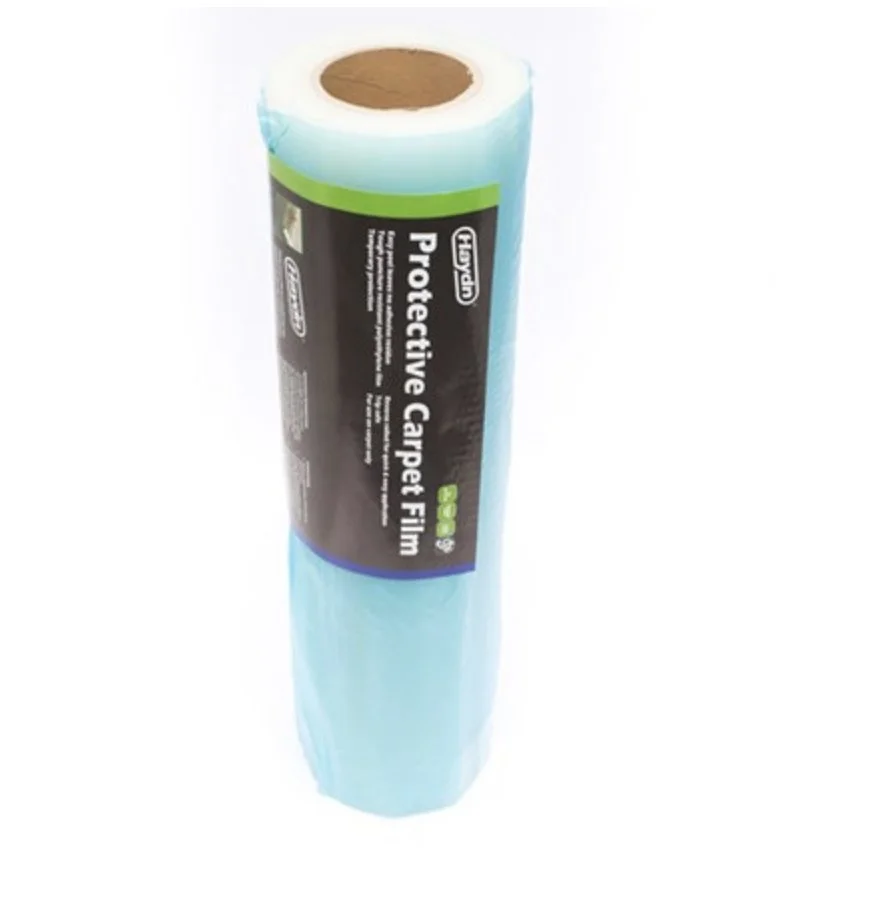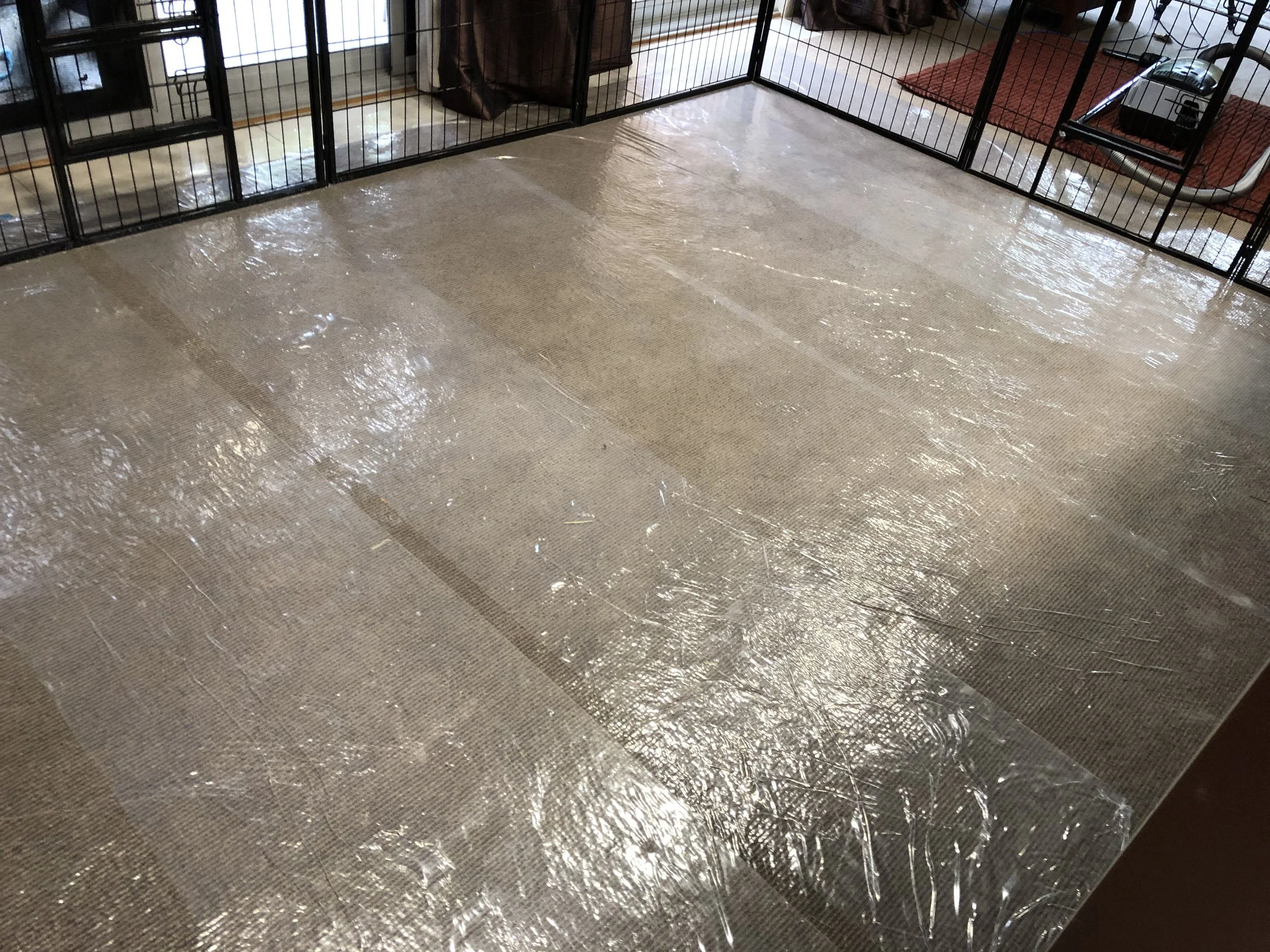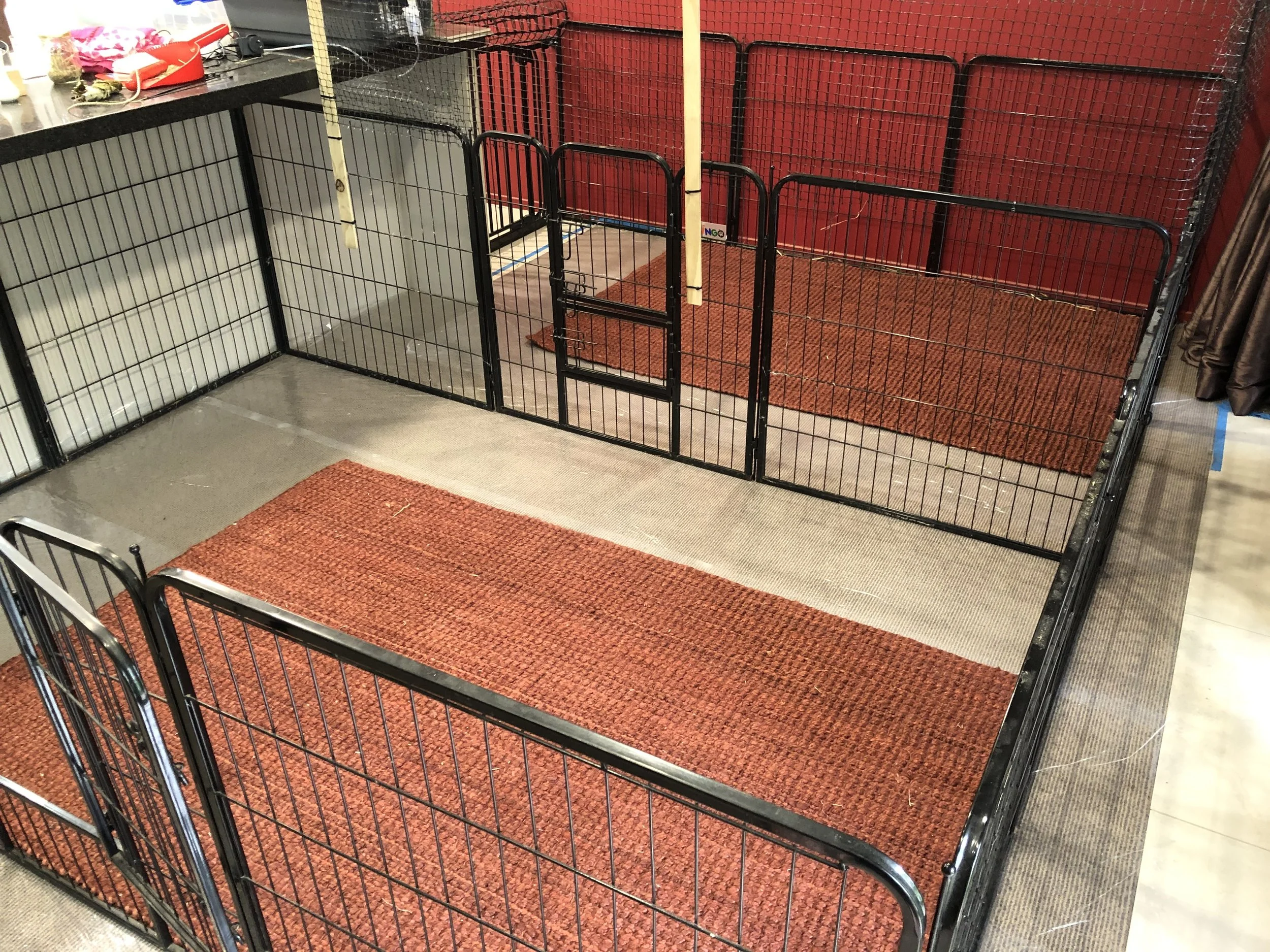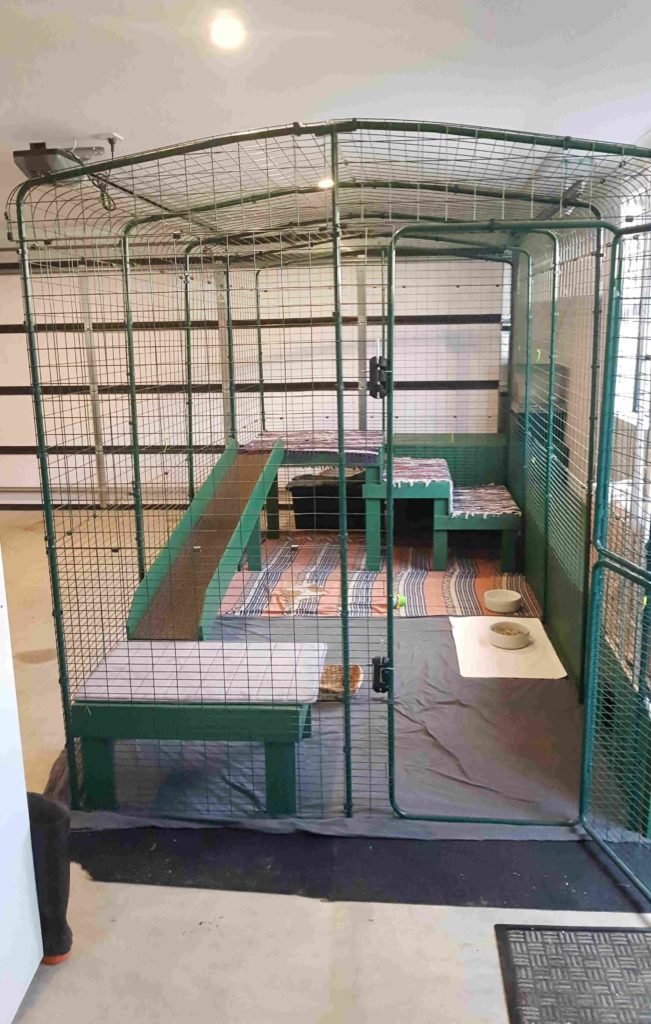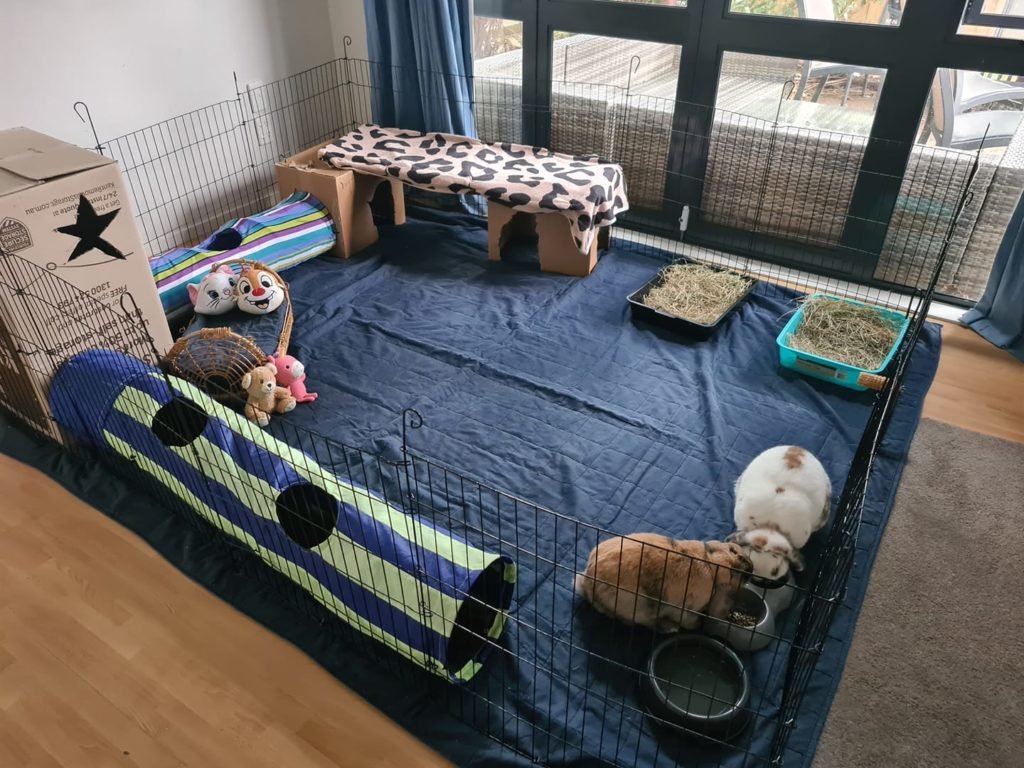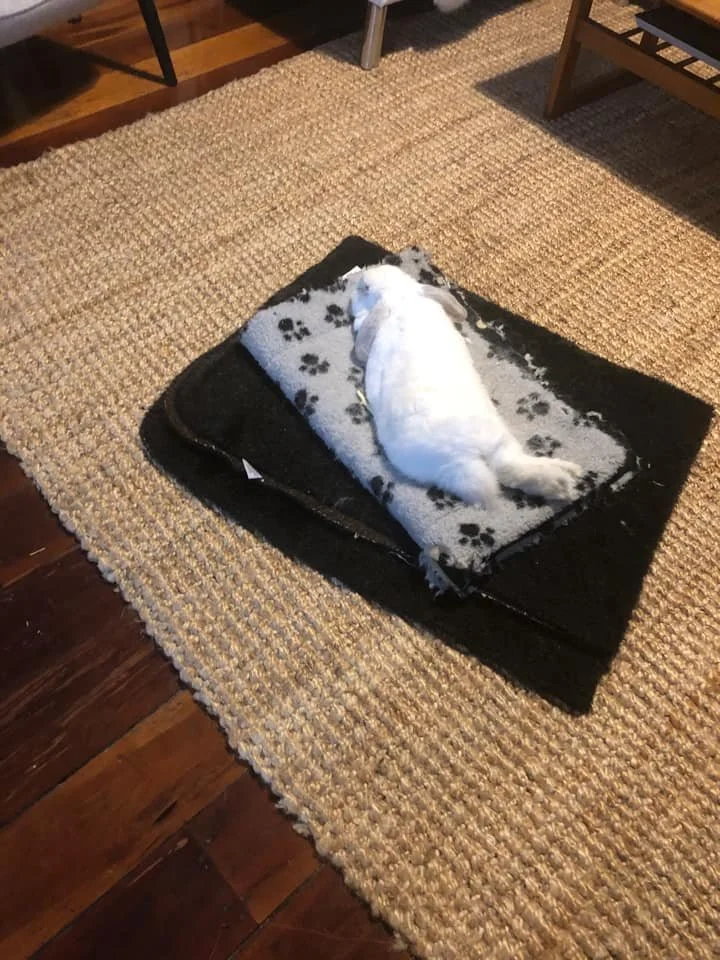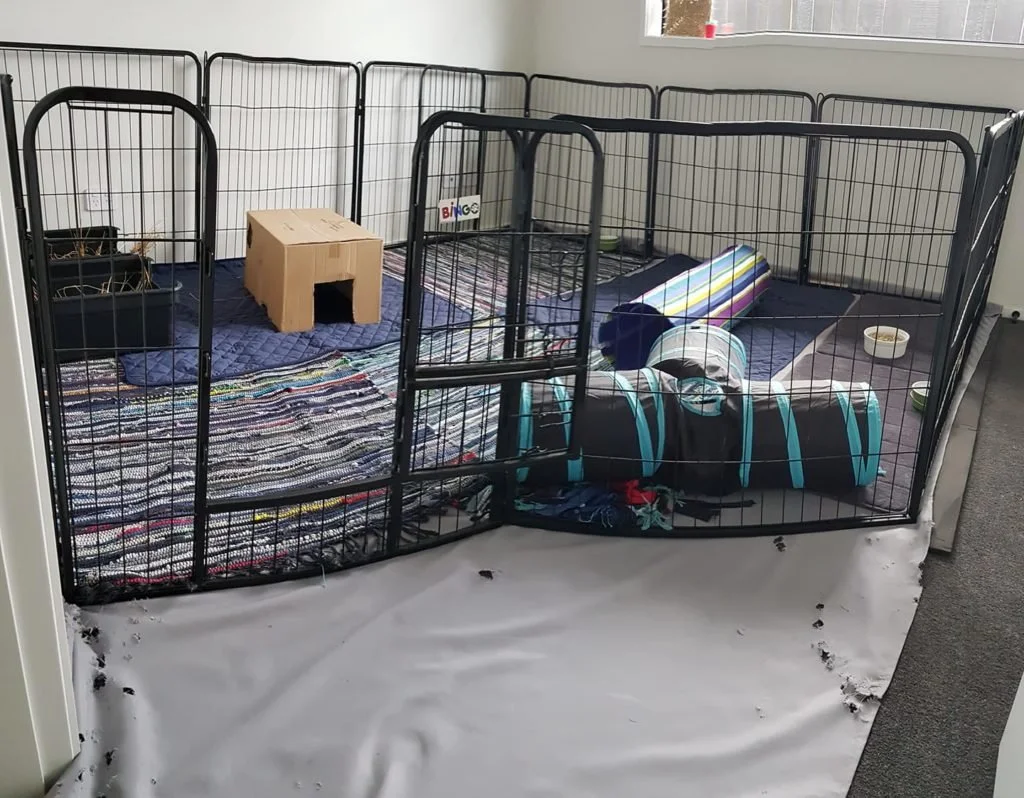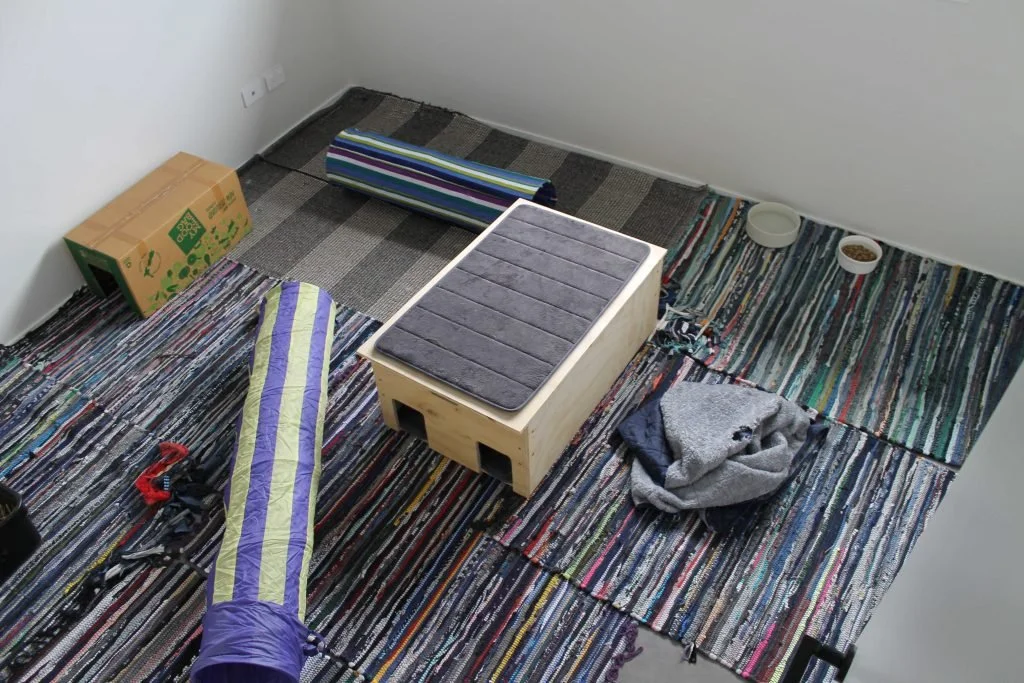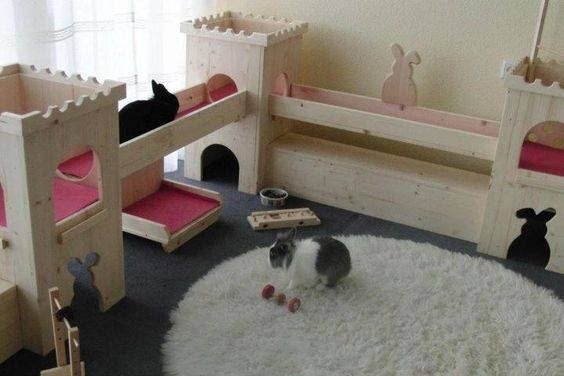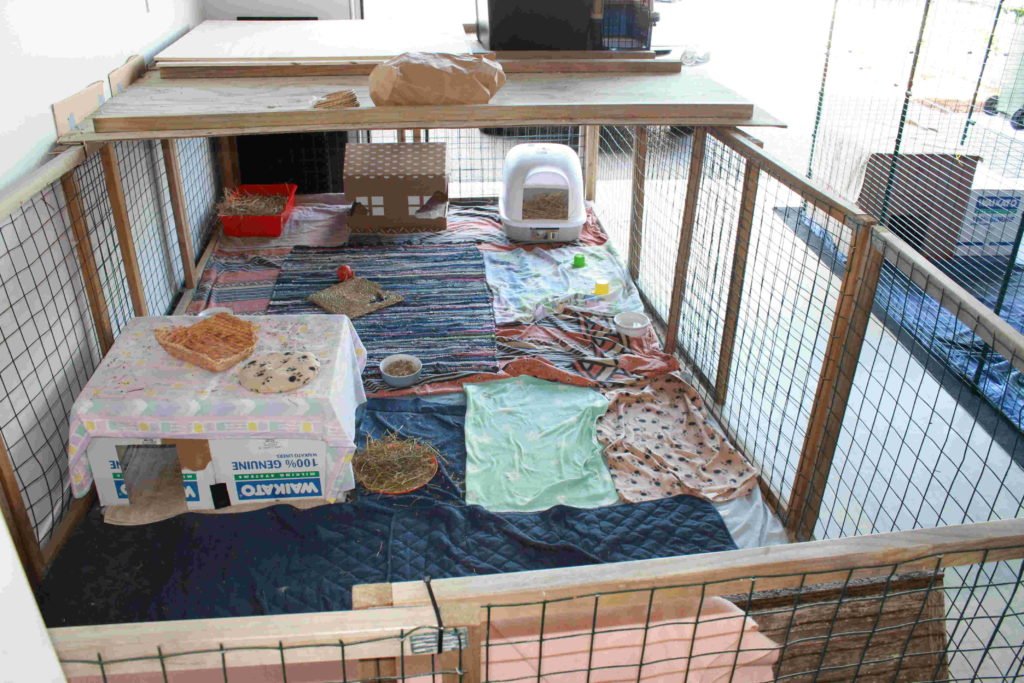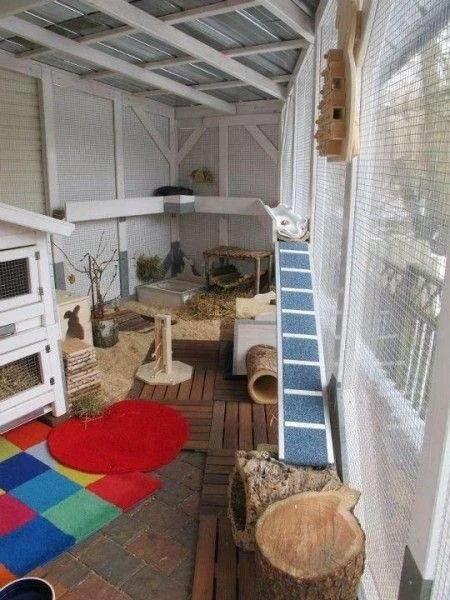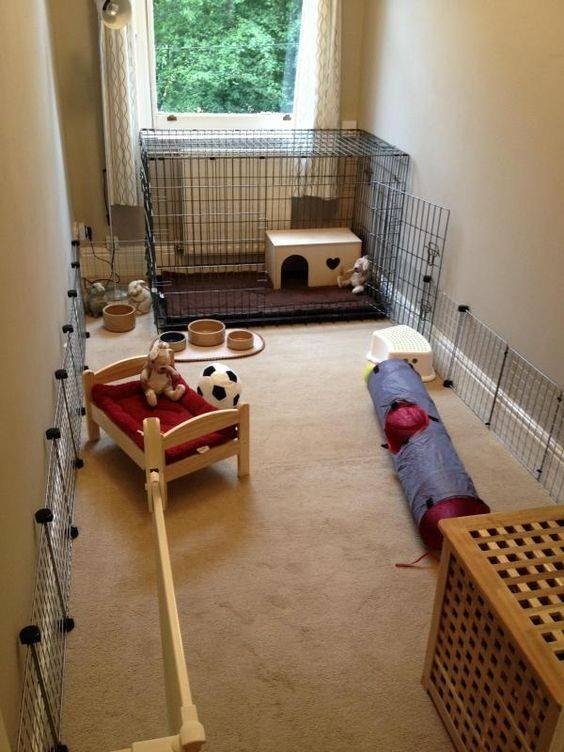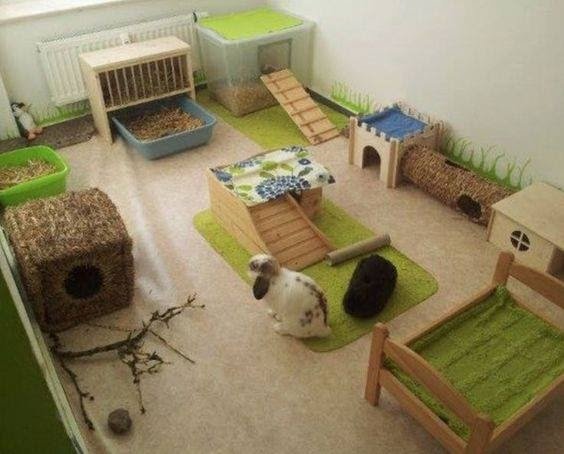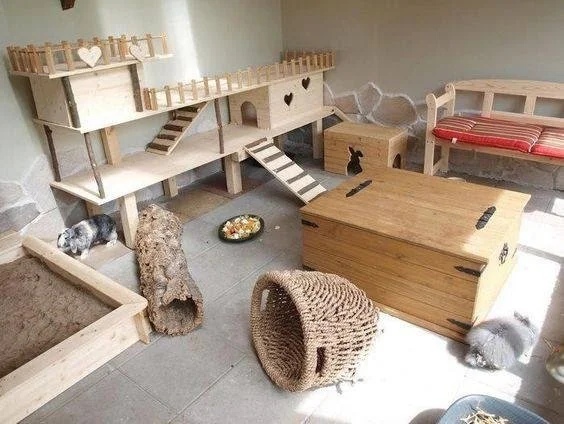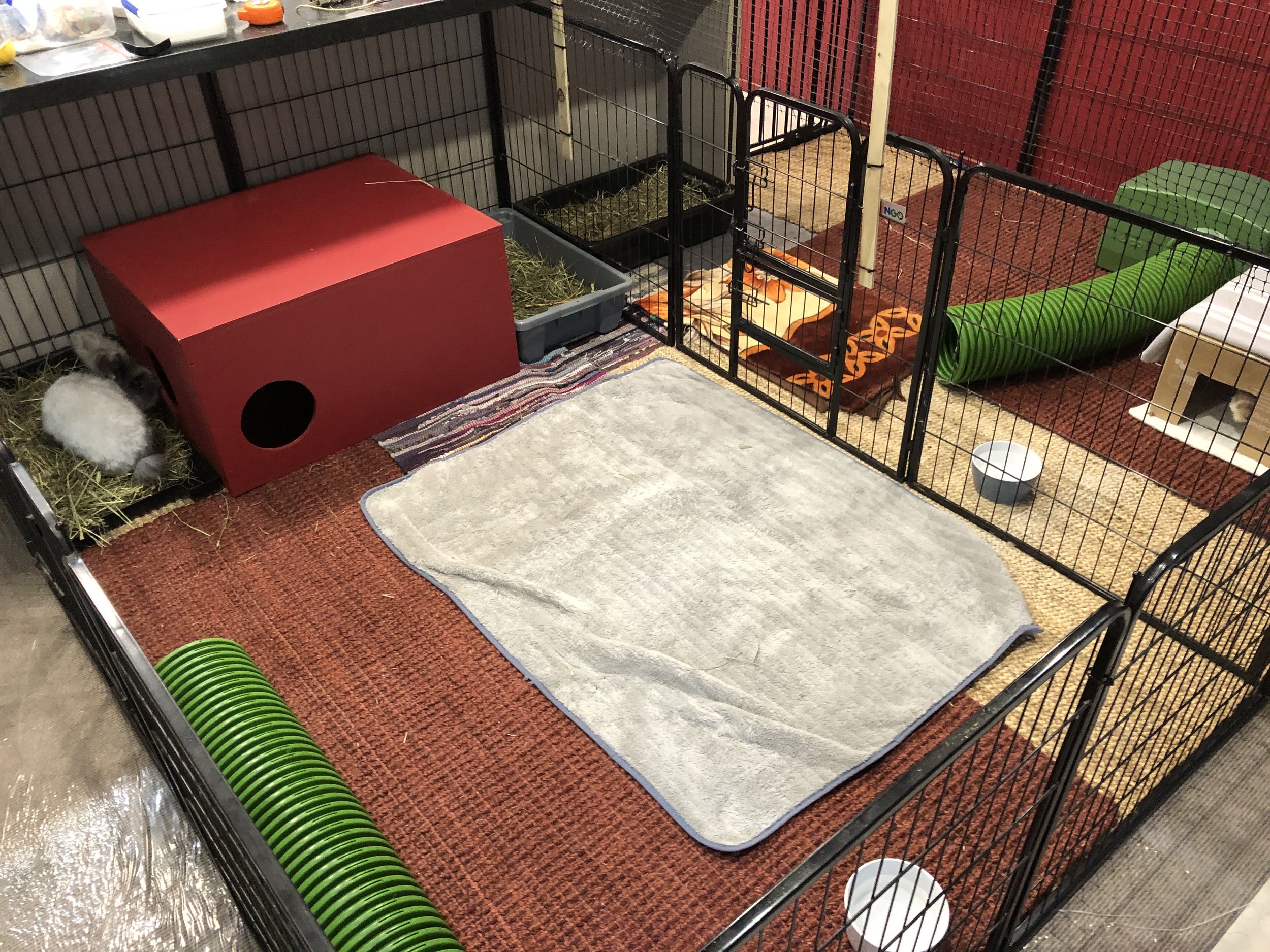Indoor Setups
This is an example of how pens can be used to make a secure and roomy indoor 'bedroom'. This pen houses my two large buns overnight and also when I am not home. If they are inside for the day they free roam the adjoining lounge area. They also have access to a 9m x 3m patio in addition to a Zippi tunnel system leading to both a digging chamber and a ‘grass’ pen for outside enrichment during the day.
"When you live with a house rabbit there will be times when you can't keep an eye on them, for instance when you are at work or at night when you are asleep. During these times you will need to find a secure place to put your bunny.
In this guide we show you stet by step how to build an enclosure with tips on what to put in it and what floor to use. We also have a gallery of enclosures so you can see inside some of the best setup out there.
The complete guide to bunny enclosures - Bunnyproof
"Before you let your bunny roam freely around in your home it's important to make sure it is bunny proofed.
In these guides we cover how to bunny proof each part of your home so you can make it safe for your bunny and avoid costly repairs.
We show you how to protect your electrical cords.
We show you how to stop your bunny chewing your wooden baseboards, door frames, furniture, and carpet. We also have tips on stopping your bunny going under your bed and couch. Don't wait for your home to start looking tatty, get bunny proofing so you can relax when your bunny is roaming without the worry."
How to Bunny Proof Your Home - Bunnyproof
There are ideas to help keep cats out of indoor pens here - Pens / Enclosures / Tunnels / Pen Toppers
FLOORING
To protect exisiting carpet or floor boards
Here at Westley’s World I am testing Heavy duty Carpet Film to protect the carpet from pee. This film is available from numerous home decorating retailers. Mine came from Millen. I’ve tried many approaches and this is the best to date. It doesn’t creep, is easy to sweep and is tough enough to walk over. It would not stand up to a determined rabbit digging it, so I offer multiple layers of rugs and blankets for the buns to dig instead. I find using the really thick, heavy Jute mats as a base layer is great for this.
Other Options -
Lino
Plastic backed polar fleece picnic rungs
Tarpaulin
Waterproof Mattress Protector
Heavy duty vinyl or polythene
Plywood or Strandboard
Heavy duty rubber 'anti fatigue' matting
Foam 'Jigsaw' matting (not fully pee proof)
Carpet Protection Film
Over concrete floors for warmth -
Foam backed garage carpet
Rubber backed carpet tiles
Plywood or Strandboard
Over the top of these you need to add a soft, non abrasive layer -
Cotton rag rugs
Cotton runner rugs
Jute mats or runners
Old cotton sheets or duvet covers
Old Continental Blankets
Polar Fleece Blankets
Minkie Blankets
For large ares of hard flooring you can use large memory foam area rugs. It pays to shop around as prices vary a lot. Search via Google for the following - Muscle Mats, Relax Mats, Memory Foam Rug, Memory Foam Area Rug etc.
Where to find these -
Memory foam bathmats - K-Mart, The Warehouse
Cotton rag rugs - Mitre10, Spotlight
Jute mats and runners - K-Mart, Mitre10, Bunnings
Foam backed garage carpet - Mitre10, Bunnings
Duvet covers, sheets and Continental Blankets - Opshops etc
Cotton rugs/runners - Various incl K-Mart, Bunnings, Mitre10
Foam jigsaw mats - Bunnings, Mitre10
Rubber Backed Carpet Tiles - Bunnings, Mitre10
Brolly sheets - Shine Canine
Drybed Mat/Vet Bed - Shine Canine, Animates, MJs
Carpet Protection Film - Bunnings and Mitre10 as well as online retailers
Here are some examples -
Something to be aware of … A word about sore hocks
Surfaces such as fake grass, wooden floors, tiles and carpet are either hard or abrasive and can eventually cause sore hocks.
- “An ounce of prevention is worth a pound of cure," and this has never been more true than in the case of sore hocks. If sore hocks are allowed to worsen and pressure sores develop, they are very difficult to treat and recurrence is common. Normally, the prevention for sore hocks is to provide a rabbit with a clean, soft and overall hygienic lifestyle, but this can be challenging.
Here are some ways to prevent sore hocks:
You can read more here - Sore Hocks / Pododermatitis
Check your rabbit's feet and hocks often for signs of inflammation. If you notice any symptoms, begin treating immediately. If you just notice minor redness, try applying Bunny Balms, New Skin, Flamazine (short term only) etc to help relieve the skin.
If you see signs of inflammation or a developing sore, try using padding with a cohesive bandage or Westley’s World Hockassins to protect your rabbit's feet. This will help protect it from pressure, scraping, wetness and, if you are applying cream, licking.
Change their flooring - Do everything you can to evenly distribute pressure on your rabbit’s hock while s/he is resting on their bedding. For indoor rabbits or inside hutches etc this may mean adjusting their bedding to something softer and more pliable - a bedding that adjusts to support your rabbit just like an orthopaedic mattress does for humans. Try adding an 'egg-crate' foam, memory foam or compressed foam mats underneath their bedding to vary the bedding surface and limit pressure. Memory foam bath mats can work well too. Jute or thick cotton mats, multiple layers of polar fleece and layer of soft cotton sheets can help as well.
Clip your rabbit's nails regularly. Short nails will assist in distributing weight more evenly on the base of the foot. Longer nails cause the rabbit to shift more weight to the back of the paw, stressing that area, and increasing the potential to form sores.
Keep your outdoor rabbit’s enclosure as clean and as dry as possible. Buy extra bedding so that you can switch it out as it gets wet. Use more absorbable bedding and bedding that wicks moisture away from the surface. Outside - especially to cover concrete, use the compressed foam ‘jigsaw’ mats for a softer surface and/or add a thick layer of Barley straw. If the area is weatherproof then jute and cotton mats can also be used.
Keep your rabbit as clean and as dry as possible, especially in the hock area. Increase your cleaning frequency and effectiveness.
Copyright 2019 - Jen Herd/Westley’s World


